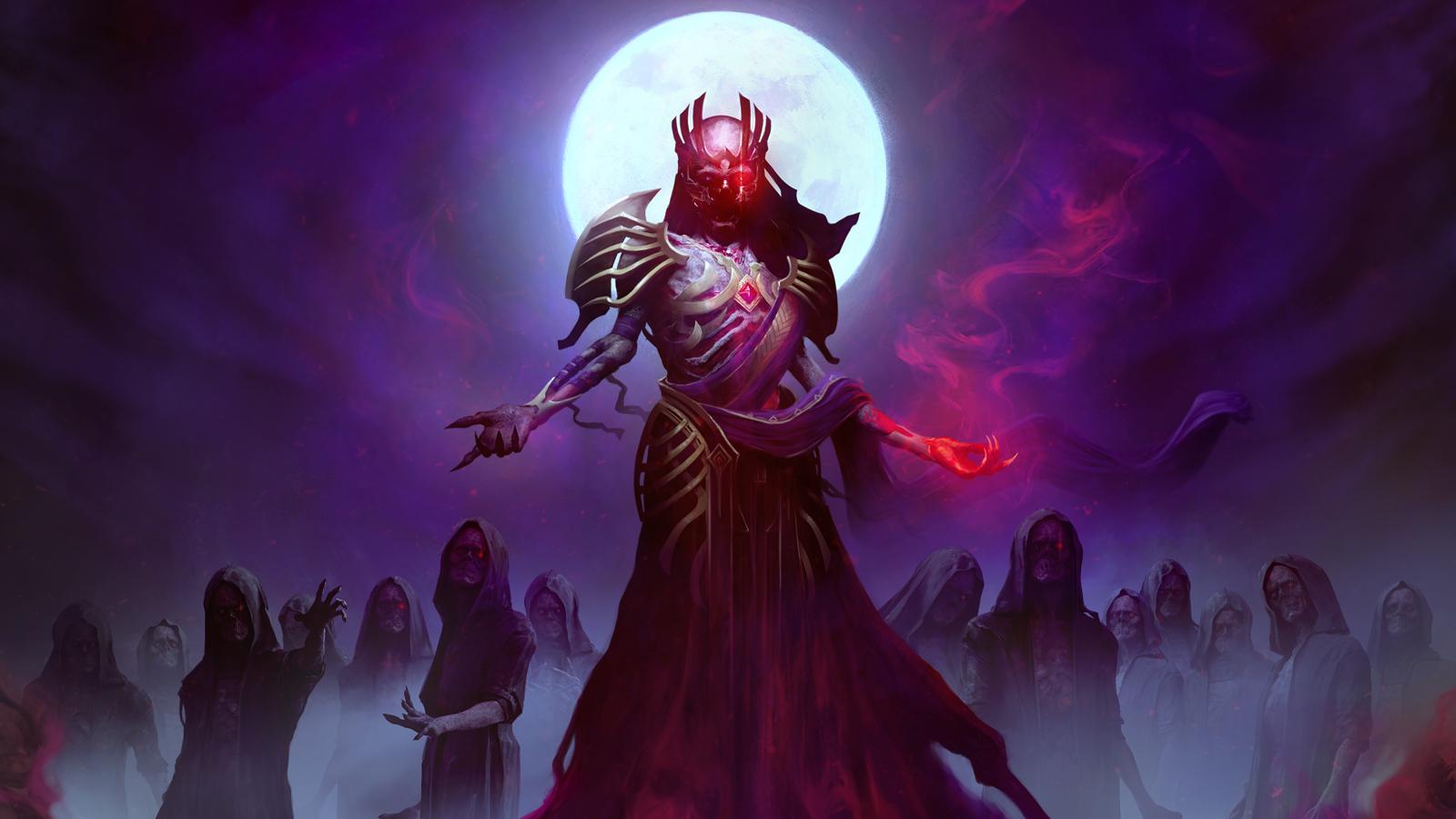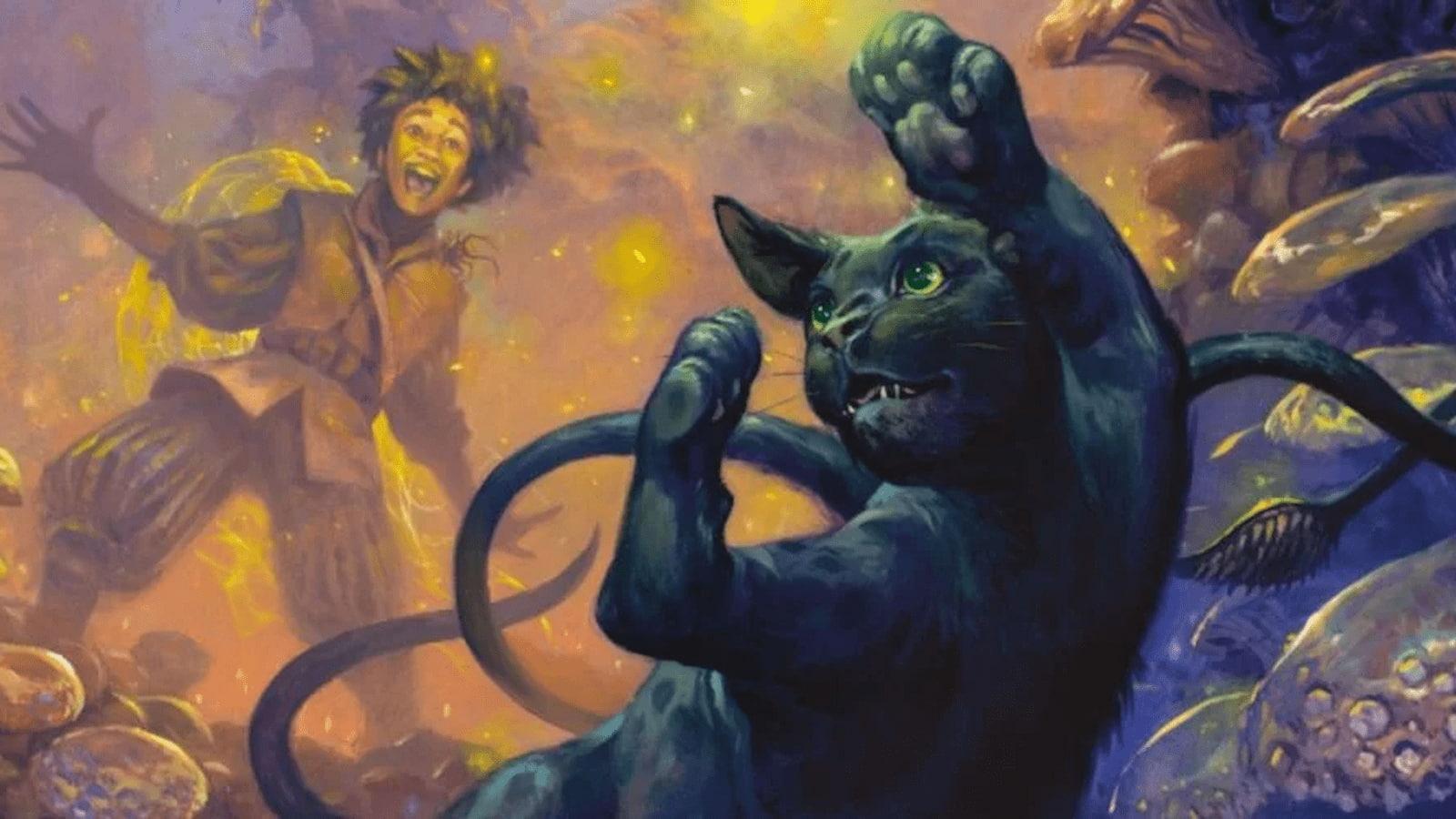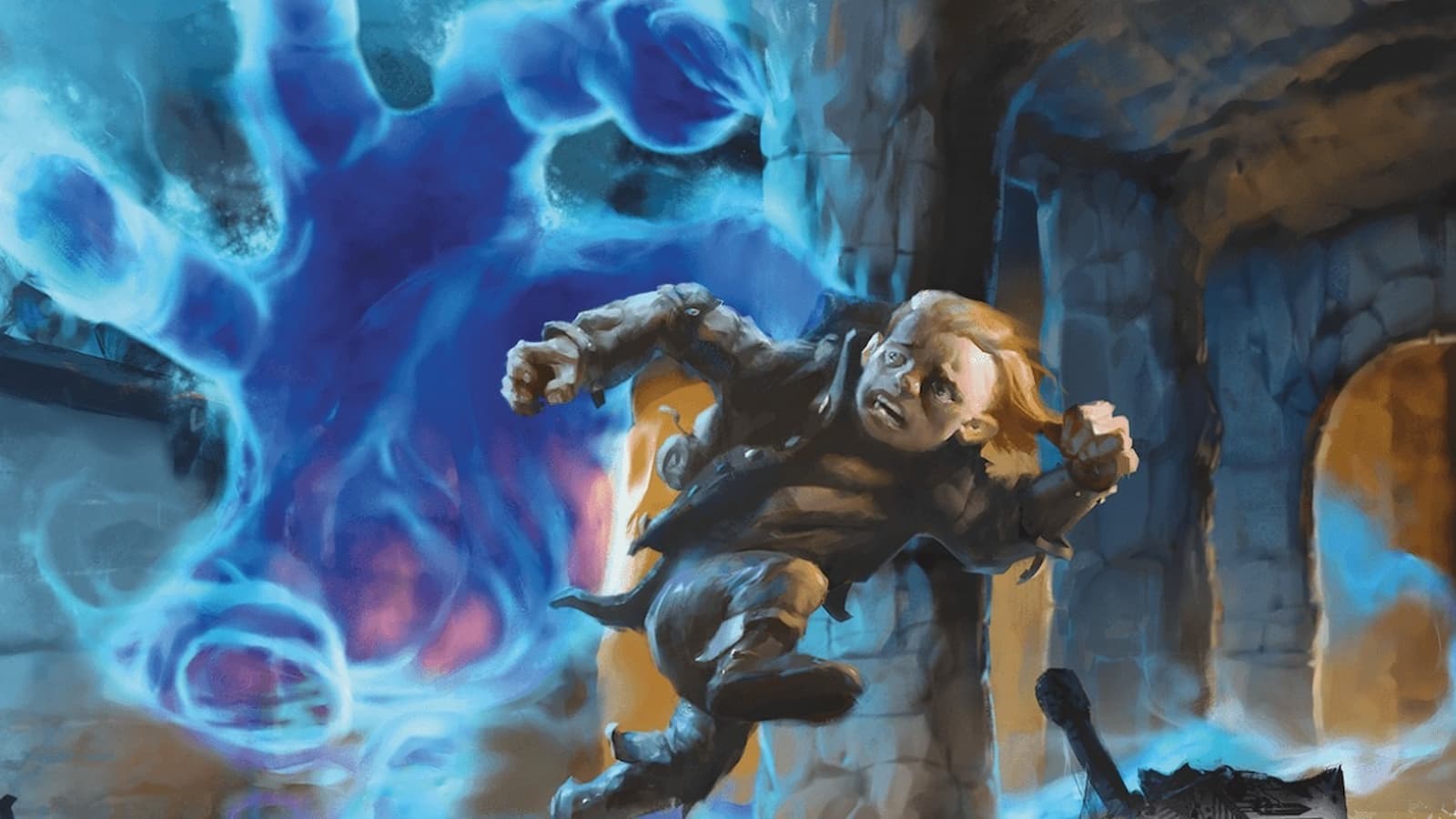D&D 5e Paladin guide: Best options for strength and smites
 WOTC
WOTCThe Paladin is an Iconic D&D class, given new prominence after its fan-favorite role in Baldur’s Gate 3. We’ll tell you what you need to know when rolling up a Paladin in D&D 5e.
Paladins have long been one of D&D’s most recognizable elements. Classically seen as holy warriors with an iron code of justice, recent D&D editions have relaxed the rules around paladins somewhat. While these warriors are still bound to a sacred oath, players have much more freedom in how they approach building a Paladin than in previous alignment-bound editions.
We’ll catch you up on what you should know when playing a Paladin in D&D 5e.
Best Race options for Paladins in D&D 5e
 WOTC
WOTCIt is important to note that, with the release of Tasha’s Cauldron of Everything, players have much more freedom in where to place their starting ability score improvements. If using Tasha’s rules, feel free to pick a character race that adds useful abilities or provides great roleplay potential.
For players using D&D 5e’s base race rules, picking the right race to complement your class is highly recommended.
Aasimar
An excellent choice both thematically and mechanically. With an innate connection to a celestial heritage and phenomenal subrace abilities, Aasimars synergise very well with the Paladin class. The Protector Aasimar subrace is particularly strong, granting extra mobility through flight to reach enemies that would otherwise evade your grasp.
Dragonborn
If utilizing the classic Race rules, Dragonborn have a perfect stat line for most Paladin builds. Increasing both Strength and Charisma allows you to start out ahead of the pack, and the Dragonborn’s breath weapon gives you some extra crowd-control utility. It’s difficult to go wrong with this playable race here, making it one of the classic go-to’s for Paladin characters.
Tiefling
The Charisma bonuses offered here can lead to a great, social-focused Paladin, as well as an increased aptitude for spells. Variant Tiefling bloodlines offer connecting to various Archdevils, and Zariel Tieflings make perfect Paladins, gaining extra combat utility and a couple of extra free-use smites.
Tieflings can make for some of the most versatile D&D characters around, with their extra spells and great ASIs more than making up for any downsides.
Paladin Hit Dice: D10
Hit Dice determines the increase to your health when leveling up and how much HP you recover on a short rest.
The Paladin’s hit dice is a D10, one of the best in the game. Only coming in second behind the Barbarian’s D12, Paladins share a Hit Dice class with fellow tanky melees Fighter and Ranger.
Thanks to their high Hit Dice, Paladins have an inherent level of survivability that allows them to fight up on the front lines and protect themselves and their allies.
Paladins’ self-healing abilities make Hit Dice somewhat less of a crucial resource than for squishier classes, but they’re still very useful to have access to.
Paladin Ability Scores and Saving Throws
When building a Paladin, here is the order in which you should typically prioritize your ability scores.
- Strength
- Charisma
- Constitution
- Wisdom
- Dexterity
- Intelligence
Strength is the main combat stat for a typical Paladin build. Determining your likelihood to hit, damage, and ability to wear heavy armor, Strength is absolutely crucial for most Paladins. This stat is less significant if choosing Dexterity as an alternative weapon-wielding stat, but Paladins generally synergize best with Strength outside of multiclass builds.
Charisma is the Paladin’s spellcasting stat, determining both their spell save DC and the number of spells they can have on hand. While it can be tempting to burn all of your slots on simple smites, having enough Charisma can drastically increase a Paladin’s versatility, as well as their out-of-combat usefulness. Paladins can really cover a wide variety of roles in D&D 5e, and this is significantly helped by their focus in Charisma.
While Paladins’ survivability is given a huge boost through heavy armor and Lay on Hands, it is still difficult to perform optimally as an up-close fighter without decent constitution. Increasing both your HP pool and concentration checks, Con is helpful for any Paladin to boost.
Wisdom is tied to many important 5e saves, and Paladins’ starting proficiency in Wisdom saves allows for shrugging off potentially harmful effects with ease if Wisdom is not dumped.
Dexterity is important enough in D&D for saves and initiative that it is rarely advisable to dump it altogether, but it is arguably less useful to Paladins than other melee classes.
That being said, it is possible to make a Dexterity-based Paladin as an alternative build. While it will be harder to wear heavy armor that will grant the most protection, for certain multiclass builds like the Swords Bard, Dexterity is a suitable primary stat to take. Going this route may make the Paladin less survivable overall, but the tradeoff in versatility and damage options can be worth it.
While intelligence may be helpful for RP and certain skills, it can be safely chosen as the dump stat for a Paladin build. Intelligence saves are exceptionally rare in D&d 5e, the choice to dump intelligence shouldn’t be too crucial for most of your playtime.
Paladin Starting Skills and Proficiencies
Paladins start out with the following proficiencies:
- All armor, shields
- Simple weapons, martial weapons
- Wisdom and Charisma saves
In addition, Paladins choose two skills from the following list to gain proficiency in:
- Athletics
- Insight
- Intimidation
- Medicine
- Persuasion
- Religion
Persuasion and Insight are incredibly useful for social interactions, and Athletics is great to invest in for physical feats like climbing and sprinting under pressure.
Paladin Class Features
 WOTC
WOTCDivine Sense can seek out the forces of good and evil
The first Paladin class feature is a kind of radar for powerful good and evil forces. As an action, Divine Sense can be activated to detect the presence of celestials, fiends, or undead creatures, within 60 feet of you and not behind total cover. This effect lasts until the end of your next turn.
Divine Sense can be used a number of times equal to your Charisma modifier +1 per long rest.
Lay on Hands is a phenomenal healing ability
An exceptionally powerful healing ability that can keep Paladins in the fight for much longer and bring their allies back from almost certain doom. Lay on Hands is reliable in a pinch, allowing a Paladin to dole out exactly as much healing as they need too without wasting additional resources.
Lay on Hands grants the Paladin a pool of healing magic that can be drawn from as an action. The pool’s total is equal to five times the character’s Paladin level. They may choose exactly how many points of healing are bestowed to an ally within 5 feet, up to the maximum remaining in the pool.
Lay on Hands has a secondary use, wherein the Paladin can spend five points from their pool of healing to cure the target of one disease or poison affecting it.
Notably, Lay on Hands has no effect on creatures of the Undead or Construct type.
Fighting Styles add versatile combat bonuses
At second level, Paladins can choose a fighting style to customize their combat role. The options from the Player’s Handbook and supplementary material are below:
- Blessed Warrior. You learn two cantrips of your choice from the cleric spell list. They count as paladin spells for you, and Charisma is your spellcasting ability for them. Whenever you gain a level in this class, you can replace one of these cantrips with another cantrip from the cleric spell list.
- Blind Fighting. You have blindsight with a range of 10 feet. Within that range, you can effectively see anything that isn’t behind total cover, even if you’re blinded or in darkness. Moreover, you can see an invisible creature within that range, unless the creature successfully hides from you.
- Defense. While you are wearing armor, you gain a +1 bonus to AC.
- Dueling. When you are wielding a melee weapon in one hand and no other weapons, you gain a +2 bonus to damage rolls with that weapon.
- Great Weapon Fighting. When you roll a 1 or 2 on a damage die for an attack you make with a melee weapon that you are wielding with two hands, you can reroll the die and must use the new roll, even if the new roll is a 1 or a 2. The weapon must have the two-handed or versatile property for you to gain this benefit.
- Interception. When a creature you can see hits a target, other than you, within 5 feet of you with an attack, you can use your reaction to reduce the damage the target takes by 1d10 + your proficiency bonus (to a minimum of 0 damage). You must be wielding a shield or a simple or martial weapon to use this reaction.
- Protection. When a creature you can see attacks a target other than you that is within 5 feet of you, you can use your reaction to impose disadvantage on the attack roll. You must be wielding a shield.
Great Weapon Fighting is a good choice for Paladins looking to maximize their damage-dealing potential. Blessed Warrior adds some nice new options for spellcasting, and Defense is useful on more or less any Paladin build.
Spellcasting
As well as powerful melee fighters, Paladins also have the ability to wield magic. Paladins are one half-casters, meaning that their spell progression and slots are roughly half of what a full caster like a Druid or Wizard gets.
The Paladin’s spellcasting modifier is Charisma. They can prepare a number of spells at the end of each long rest equal to their Charisma modifier plus half their Paladin level (rounded down).
Divine Smite
Smites are the Paladin’s bread-and-butter. This hugely powerful combat ability allows Paladins to convert spell slots into huge bursts of divine damage.
Starting at second level, when a Paladin hits an enemy with an attack, they may choose to activate Divine Smite and expend a spell slot to deal additional Radiant damage based on the slot that was spent. A first level slot deals 2D8, and increasing by 1D8 per level to a maximum id 5D8 for fourth level slots or higher. This damage increases by 1D8 if the Smite is used against a fiend or undead.
Extra Attack doubles your damage-dealing
Starting at level five, Paladins can attack twice instead of once when they take the attack action. With two attacks per round, Paladins can deal a huge amount of damage with their swings and smite.
Aura of Protection saves allies from danger
At level six, Paladins are able to bolster their nearby allies’ defense. Whenever an ally within 10ft of the Paladin must make a saving throw, they gain a bonus to the save equal to the Paladin’s Charisma modifier.
Thanks to Aura of Protection, a Paladin’s presence can be the saving grace that prevents an ally from succumbing to a deadly failed save.
Paladin Subclasses
The Paladin subclass options in the D&D 5e Player’s Handbook are detailed below, each focusing on a different type of Oath. Additional subclasses can be found in Xanathar’s Guide to Everything, Tasha’s Cauldron of Everything, and more.
Oath of Devotion
When the image of the classic Paladin comes to mind, the Oath of Devotion is usually what is pictured. These selfless crusaders for the common good are bound to uphold honor, order, and kindness in equal measure. Playing as a Devotion Paladin means serving as an inspirational figure, a beacon of light that strives to uplift the world around them.
Mechanically, Devotion Paladins gain a great deal of abjurative and restorative magic and abilities, warding away harmful effects. They also can set up for huge additional damage, adding their charisma mod to attacks through Channel Divinity.
Oath of the Ancients
The Oath of the Ancients is a somewhat otherwordly order, being tied into spirits of nature and life itself. While Devotion Paladins may work within the bounds of law and civilization, Ancients Paladins are less tethered. They simply exist to allow life and the light of the world to flourish, seeking to preserve joy and beauty above all.
Mechanically, Ancients Paladins gain magic that is more familiar to Druids than Clerics, interfacing with the natural world and elemental powers. They are also incredible anti-magic fighters, granting themselves and their allies the power to shrug off harmful spells with ease.
Oath of Vengeance
As opposed to Devotion and Ancients Paladins, the Oath of Vengeance sees Paladins take a darker path. While not presented as an evil option in the way the Oathbreaker is, Vengeance Paladins cast aside personal qualms in order to confront the greater evil.
Mechanically, Vengeance Paladins are the most openly aggressive, with the potential for incredible single-target damage and a suite of abilities designed around cutting off your enemies’ escape. There’s nowhere to run once the Vengeance Paladin has you in their sights.
Best Paladin spells per level
Paladins are effective one-half casters with a good variety of spells available. Here are our picks for the best Paladin spell per level:
| Spell Level | Best Spell Options |
| 1st Level | Bless, Command, Cure Wounds, Compelled Duel, Shield of Faith, Wrathful Smite |
| 2nd Level | Aid, Branding Smite, Find Steed, Lesser Restoration, Zone of Truth |
| 3rd Level | Aura of Vitality, Dispel Magic, Revivify, Spirit Shroud |
| 4th Level | Aura of Life, Banishment, Death Ward, Find Greater Steed, Staggering Smite |
| 5th Level | Banishing Smite, Circle of Power, Holy Weapon, Summon Celestial |
If you click on a product link on this page we may earn a small affiliate commission.



